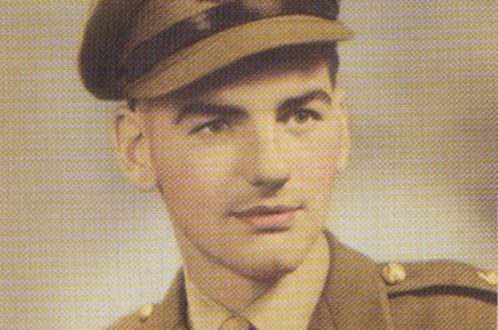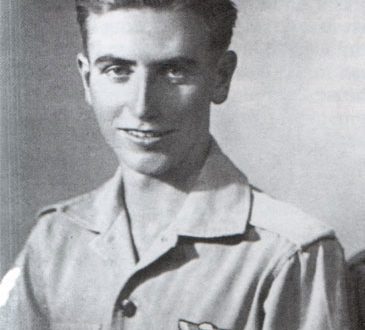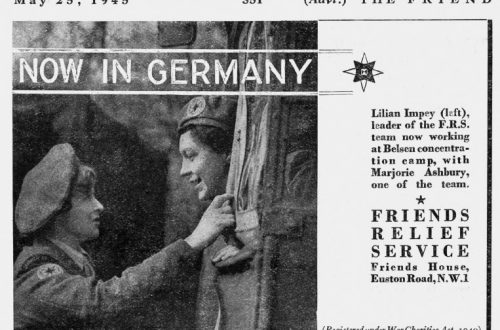Edgar Ainsworth
Edgar Ainsworth was born in 1905. As the Art Editor for Picture Post magazine, Ainsworth visited Bergen-Belsen three times in the months after it was liberated and recorded in his drawings the changes he saw among the people he met there.
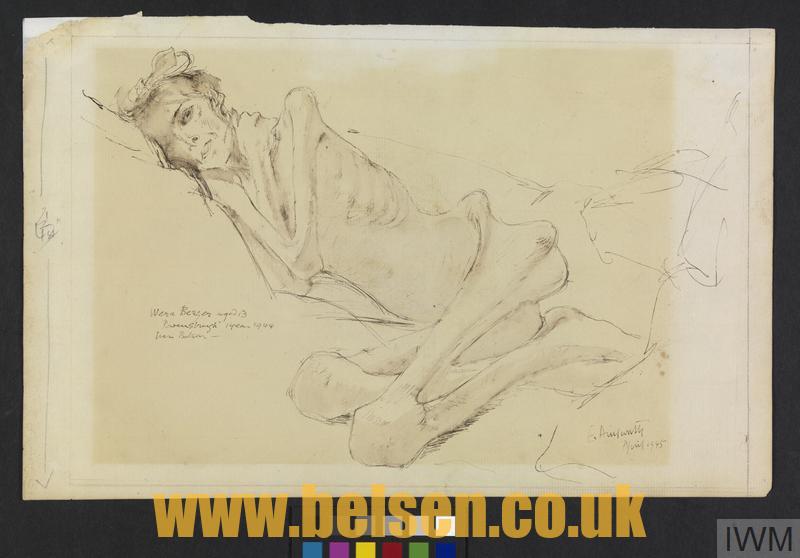
In September of 1945, Ainsworth published a number of his drawings in Picture Post along with an article that gave his witness account of life in the liberated camp. This article was written in response to the ongoing Belsen Trials and to combat the sentiments of scepticism and indifference he had observed among some members of the general public. ‘I went to Belsen shortly after it was liberated. I saw the horrors of mass death. I was nauseated, as every other sane human would be. But it wasn’t the piles of rotting dead that fascinated and horrified me, it was the condition of the still living’. Edgar Ainsworth, ‘Victim and Prisoner’ Picture Post, September, 1945.
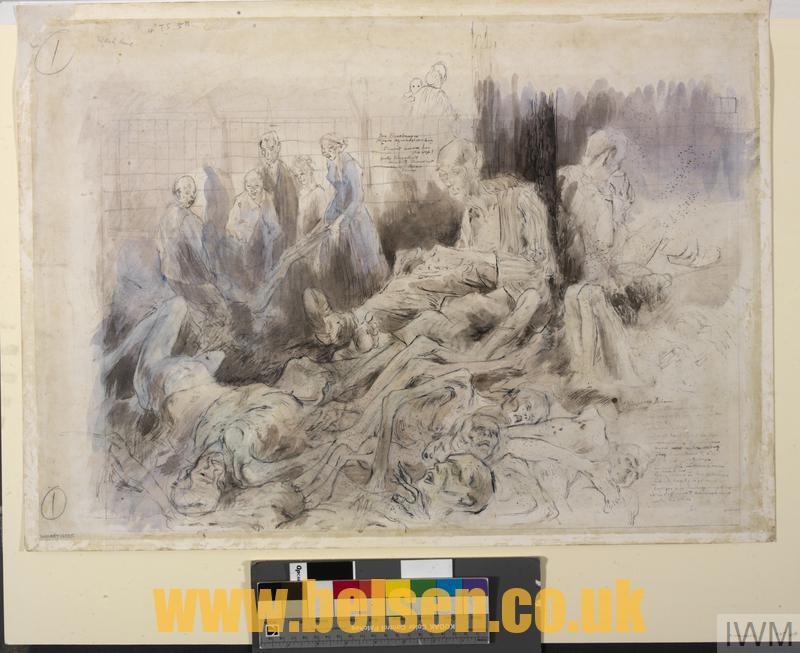 A scene in Belsen as witnessed by the artist. In the centre of the composition there is an emaciated elderly man in striped concentration camp uniform, wearing only one shoe, sitting on a slight rise in the ground above a pile of corpses (men, women and children), his back to a pillar. He appears to be holding something in his hands. Behind him, leaning on the other side of the pillar, is another man, his back to the viewer drinking from a cup. In the left of the composition a group of three people stand and watch as a man and a woman lift a shrunken corpse by the shoulders and legs. They are comparitively healthy looking and better dressed, which suggests they may be German citizens forced to bury the dead at Belsen after liberation. Above the central figure’s head is a sketch of the rear view of a woman holding a child. Clouds of small black dots representing flies hover over the dead. The drawing is squared in the upper section and annotated. text: (above central figure) Jan Pressburger Pilsen Czechoslovakia “I can’t leave her” (his wife) Ghetto Tiersastadt Auswitz Ravensbruch Belsen 7 years text: (lower right) E Ainsworth Belsen. The only difference between living and dead is the living feel hungry and cold. Nobody talks: there is a constant buzzing of flies, flies are everywhere. The internees move about automatically. They know that to stop is to die – although many die in their tracks. The Dead are Every colour in the spectrum hands, heads, legs and bodies are thrown any where it is difficult to connect any with the others.
A scene in Belsen as witnessed by the artist. In the centre of the composition there is an emaciated elderly man in striped concentration camp uniform, wearing only one shoe, sitting on a slight rise in the ground above a pile of corpses (men, women and children), his back to a pillar. He appears to be holding something in his hands. Behind him, leaning on the other side of the pillar, is another man, his back to the viewer drinking from a cup. In the left of the composition a group of three people stand and watch as a man and a woman lift a shrunken corpse by the shoulders and legs. They are comparitively healthy looking and better dressed, which suggests they may be German citizens forced to bury the dead at Belsen after liberation. Above the central figure’s head is a sketch of the rear view of a woman holding a child. Clouds of small black dots representing flies hover over the dead. The drawing is squared in the upper section and annotated. text: (above central figure) Jan Pressburger Pilsen Czechoslovakia “I can’t leave her” (his wife) Ghetto Tiersastadt Auswitz Ravensbruch Belsen 7 years text: (lower right) E Ainsworth Belsen. The only difference between living and dead is the living feel hungry and cold. Nobody talks: there is a constant buzzing of flies, flies are everywhere. The internees move about automatically. They know that to stop is to die – although many die in their tracks. The Dead are Every colour in the spectrum hands, heads, legs and bodies are thrown any where it is difficult to connect any with the others.
***
IWM Art.IWM ART 16555
Hi,
I was just browsing to see if my father (Edgar) Ainsworth was mentioned.
He was born in Blackburn, Lancs in 1905 and was the son of a cotton mill owner.
He studied art and eventually became the art editor of “Picture Post”. During the war he was a war correspondent being amongst the troops to liberate Belsen concentration camp — an experience that led to him drinking too much and the eventual end of his marriage to my mother (also an artist) Rosalie.
He had a brother and a sister.
I am his eldest son, born 1939. His younger son Julian was born 7 years later.
I do not know whether this helps you because Ainsworth is quite a well known name in the north of England — there is even a village or small town called Ainsworth
13,277 total views

